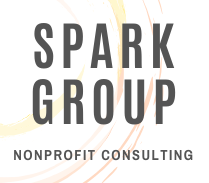Fundraising 101: Got Approval for Tax-Exempt Status, Now What?
Fundraising 101:
Got Approval for Tax-Exempt Status, Now What?
You did it! Congratulations on receiving your 501(c)(3) Determination Letter. Let’s review some fundraising fundamentals before your organization can begin accepting donations.
Understand All Compliance Requirements
Be familiar with the Internal Revenue Service (IRS) annual filing cycle, including important deadlines and staying in compliance. Some activities could jeopardize your organization’s tax-exempt status, so understanding all applicable federal and state rules and regulations will help your organization keep its active status. The IRS has dedicated an entire website to assisting nonprofit organizations to stay exempt (www.stayexempt.irs.gov).
Establish Clear Record-Keeping and Operating Procedures
Review your record-keeping and operating procedures. For example, does the tax receipt template include your organization’s federal tax-exempt number? Are your staff and board members familiar with the gift acceptance policy? Who will maintain the database and data entry? Where will all accounting-related documents be stored in preparation for the annual audit? After establishing your organizational operating procedures, you can then fundraise.
Build Your Donor Base
According to the 2021 Giving USA report, in 2020, Americans gave $471.44 billion to charity. There are four sources of Americans’ generosity: individual giving (69%), foundations (19%), bequest (9%), and corporate funding (4%). As a new organization, you should start building your donor base right away. Securing corporate sponsorship and grants may take some time because your organization is brand new. Individual donors are the backbone of every organization, so building your major gift program will bring a stable revenue stream for your organization.
Cultivate New Donors Online
As more individuals become vaccinated, donors will be more comfortable and gradually return to in-person events. Nonprofit organizations are planning gala fundraisers and house parties to cultivate new donors and retain existing donors. However, some donors may stick to online giving until the pandemic has subdued. Use social media to attract new donors and make it easier for donors to donate on their smartphones, tablets, and computers.
Organize Your Fundraising Strategy
Successful fundraising requires patience, persistence, and a fundraising plan. Your fundraising plan should include fundraising activities such as a major gift program, grant writing, marketing opportunities for corporate sponsorship, annual appeals, and stewardship events. We can help you fundraise strategically and effectively for your organization. Contact us today to set up a free 30-min chat.
⭐ Join our weekly newsletter where we share tons of exclusive tips, tools, grant opportunities, and resources to our subscribers. Subscribe on the Spark Group home page.




